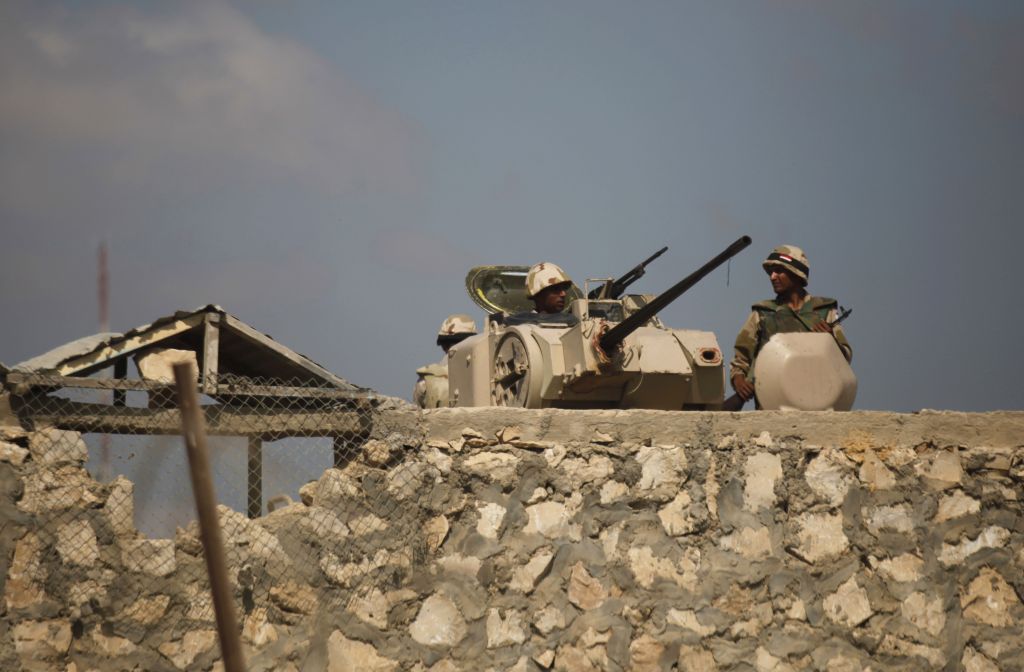In a region plagued by armed conflicts, negotiations between different parties are based on mutual benefits and interests, and are usually aimed at achieving economic and social security both nationally and regionally.
Following the election of a new Hamas Political Bureau Chief and the movement’s presentation of its new charter, it began to seek building bridges of trust with Cairo.
The relationship between the movement and countries in the region, especially Egypt, have witnessed a setback due to infiltrations and smuggling operations from Gaza to Sinai and vice versa.
Palestinian sources confirmed the death of two Gazans in Sinai after Egyptian military operations targeted terrorist outposts, in response to the death of a number of Egyptian soldiers in separate checkpoints. Since then, observers of Palestinian affairs started posing some legit questions about the nature of security negotiations with Hamas.
Is the movement capable of fully regulating borders? How could personnel from Gaza sneak into Sinai in spite of Hamas’ procedures?
Certainly, Hamas is already working on ground to pursue terrorists and takfiris (Muslims who brand others as ‘apostates’) in Gaza. The movement has been struggling against extremists in the Strip. Lately, a security services officer was killed in Gaza, and others were injured as they thwarted a Takfiri infiltration attempt from Gaza into Sinai.
There is no doubt that the security buffer zone that Hamas built across the border will decrease the number of infiltration operations from Gaza to Sinai and vice versa.
However, it is not enough to defeat Takfiris who work along the borders between the Strip and Egypt.

Egypt’s Abdel Fatah al-Sisi talks with Palestinian president Mahmoud Abbas
This calls for further security coordination and cooperation between Cairo and Gaza, as well as developing a strategy against those holding extremist ideas, as they pose a more serious threat to Gaza’s security; even more serious than the threat they pose to Sinai.
The Gaza Strip’s major problem is that internal security forces are not provided with modern scientific anti-terrorism training. In addition, Hamas is not dealing strictly enough with extremists in the Strip, who recruit frustrated and brainwashed youth to fight in Sinai. What adds salt to injury is the difficult economic situation in the Strip, which compels many young people to either immigrate or join Takfiris in Sinai.
The fact that two Palestinians infiltrated Sinai from Gaza shows the dangers both Gaza and Sinai are facing. Extremists in the Strip are active through tens of mosques and zawaya (small mosques) in the Strip. Salafist extremists are in control of them, and they manipulate Palestinian youth who are desperate and frustrated.
A number of procedures on the ground need to be implemented. First, these young people’s suffering, which is one of the main factors that leads them to extremism, needs to be alleviated. In addition, a strategy needs to be developed to confront extremist thought in Gaza, in order to combat young extremists.
Available information about Palestinian terrorists indicates that they visit mosques controlled by Salafists in Gaza. They instill their takfiri thought in Palestinian teenagers who are hopeless with the dire conditions that were prevailing due to the Palestinian division.
Egypt may have calculated the issue of the reconciliation from this perspective; believing that accomplishing Palestinian reconciliation to alleviate the suffering and the humanitarian crisis in the Strip would curb extremism. One of the main reasons why Gazan youth adopt extremist ideas can be strongly attributed to the Palestinian division; which in turn threatens Egyptian national security.
A number of questions need to be posed to Hamas and clear-cut answers are required. Can Hamas fully secure borders between Gaza and Sinai? Is the movement adopting a successful strategy to face extremism? How is Hamas dealing with extremist Salafist groups, whose members infiltrate Sinai and implicate Hamas with Israel by firing missiles randomly?
Statements by prominent internal security personnel in Gaza indicate that Hamas has a real and sincere intention to regulate borders and prevent infiltrations into Sinai.
Does the movement, then, have a count of the youth who left Gaza to fight in Syria, Iraq or Sinai? Has the movement reached a possible number of terrorists from Gaza who are fighting in Sinai? Is the movement willing to further cooperate with Egypt on a security level to combat extremism, which threatens the security and stability of Sinai and Gaza?
Hamas knows that the latest negotiations in Cairo are based on mutual interest and benefits.
This means that the security and stability in Sinai and the movement’s cooperation with Cairo in fighting hardliners and extremists will have a positive impact on the Gaza Strip, as Cairo is working to alleviate the humanitarian suffering there and lift the Israeli siege on it.








































admin in: How the Muslim Brotherhood betrayed Saudi Arabia?
Great article with insight ...
https://www.viagrapascherfr.com/achat-sildenafil-pfizer-tarif/ in: Cross-region cooperation between anti-terrorism agencies needed
Hello there, just became aware of your blog through Google, and found ...